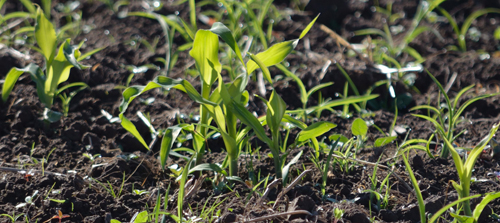by Amanda Smith, Hoard's Dairyman Associate Editor

Spreaders and other implements are beginning to hit fields across the country as we begin the 2013 cropping season. But have you taken the time to evaluate your nutrient recording keeping system lately? As both feed and fertilizer prices remain high, knowing what is going on and in your fields is a powerful tool to help you make purchasing decisions.
In the April Miner Institute Farm Report, Sally Flis, a nutrient management planner, broke nutrient sampling into two parts: what to sample and the data you should be recording.
What to sample?
Sampling manure and soil at the appropriate times is key to a developing a good crop records system.
Manure: Should be sampled at least once a year, close to the time of application.
To sample solid manure:
Records will be most useful for strategic application decisions if they are kept on an individual field basis. For each field you should record: manure applications, planting date and method, fertilizer and lime applications, along with the yields from each field.

Spreaders and other implements are beginning to hit fields across the country as we begin the 2013 cropping season. But have you taken the time to evaluate your nutrient recording keeping system lately? As both feed and fertilizer prices remain high, knowing what is going on and in your fields is a powerful tool to help you make purchasing decisions.
In the April Miner Institute Farm Report, Sally Flis, a nutrient management planner, broke nutrient sampling into two parts: what to sample and the data you should be recording.
What to sample?
Sampling manure and soil at the appropriate times is key to a developing a good crop records system.
Manure: Should be sampled at least once a year, close to the time of application.
To sample solid manure:
- Take six samples from different places in the stack.
- Avoid sampling from the crust, which is lower in nutrients.
- Samples can be taken from a spreader. If this is the case, take samples from six different loads.
- Mix samples in a clean plastic bucket and take a composite sample for lab analysis.
- Freeze the sample until it is sent to the lab.
- Agitate the manure storage before sampling.
- Throw a bucket on rope into manure storage and take multiple samples.
- Mix sub-samples in a larger bucket and take a composite sample.
- Another method is to take samples from different loads during spreader loading.
- Samples may also be taken at the time of application.
- Freeze the sample until it is sent for analysis.
- Sampling can be done in fall, winter or spring, but do not take samples when soil is saturated. Fall or winter samples allow for use in planning spring applications of manure or fertilizer and where crop changes could be made.
- Cornell University recommends that you sample 15-acre areas at a rate of two to three core samples per acre.
- Mix sample cores together to create a subsample and send a cup to the lab for analysis.
- Samples should be analyzed for pH, phosphorous, potassium, calcium, magnesium, iron and zinc.
Records will be most useful for strategic application decisions if they are kept on an individual field basis. For each field you should record: manure applications, planting date and method, fertilizer and lime applications, along with the yields from each field.








